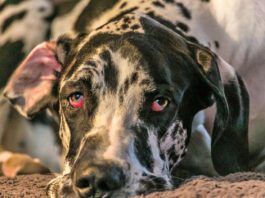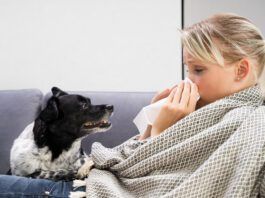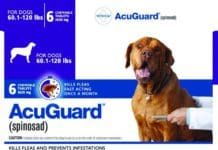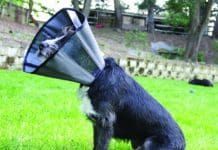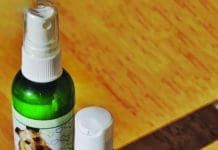Prescription Oral Flea Control Medication for Dogs
For several reasons, veterinarians tend to put the most stock in prescription oral or topical flea medications than any other preventatives. In fact, these are the two most effective solutions for killing fleas but they aren't without potential side effects and they should represent only a part of a dog owner's efforts to control fleas.
2017 Best Dog Cone Alternatives
The term recovery collar is becoming the standard term to refer to what has been called an Elizabethan collar, a pet cone, or more humorously, a lampshade, a pet radar dish, and, of course, the misnomer cone of shame. There is no shame in needing help! The term Elizabethan collar is still heard frequently, but because it tends to be shortened to e-collar and because thats also a shortened version of electronic collar, the phrase is falling out of use for this application.
What is Hypoallergenic Dog Shampoo?
There are countless so-called hypoallergenic" dog shampoos on the market
The 3 Most Common and Preventable Canine Maladies
What is the worst part about these strikingly common conditions dogs get? They are all entirely preventable. Obesity, periodontitis, and overgrown nails affect more dogs in the United States than any other diseases, and can be just as harmful.
9 Things To Do if Your Puppy Has Kennel Cough
Kennel cough, or tracheobronchitis, is comparable to the common cold in humans. Nevertheless, it is frightening to many new dog guardians to discover that their puppy or newly rescued dog has contracted the disease. An unrelenting goose-like cough is the hallmark of kennel cough in dogs, but fortunately, most cases are treated successfully at home. To ensure your puppy recovers from kennel cough in a minimal amount of time and without complication, Whole Dog Journal has outlined the necessary steps you, the concerned guardian, need to take.
Prescription Drugs for Dog Arthritis Pain Relief
Hundreds of drugs developed for human pain are used by veterinarians to treat chronic pain in dogs, but only nonsteroidal anti-inflammatory drugs (abbreviated as NSAIDs and pronounced EN-seds") and two non-NSAID prescription drugs (Galliprant and Adequan) have been approved by the U.S. Food and Drug Administration (FDA) for canine use. For many veterinarians
Make Vet Visits Less Scary
Vet visits can be stressful for the beings on both ends of the leash! As my dog sits in the waiting room, awash in trepidation, I, too, am often worried about what decisions I'll need to make regarding diagnostic testing, what it's all going to cost, and the pros and cons of every possible scenario all while battling an overall concern for my dog's physical and emotional health. Veterinary care is a necessary part of responsible dog ownership, and, fortunately, a little pro-active planning and thoughtful training can help reduce vet-related anxiety for both dogs and their owners. The following tips will help prepare you and your dog for your next trip to the vet's office.
Parvovirus in Dogs: What It Is and How to Prevent It
Because Canine Parvovirus can be found anywhere infected dogs have visited, the cornerstone to protecting your dog from the parvovirus is vaccination. Since the development of the parvo vaccine, the incidence of infection has been greatly reduced. A single modified live vaccine can confer protection within three to five days. Although parvoviruses continue to evolve, vaccination appears to confer reliable protection against all known strains.
10 Weight Loss Tips for Senior Dogs
Older dogs, like older people, have an easier time getting around if they aren't overweight. Losing weight can be a challenge for dogs at any age, but more so as dogs grow older. Still, weight loss for dogs is worth the effort. Slender dogs not only get around more easily, but also actually live longer. A 14-year study showed that dogs fed 25 percent fewer calories than their free-fed littermates lived nearly two years longer, showed fewer visible signs of aging, and enjoyed an extra three years of pain-free mobility before developing canine arthritis.
The Many Causes of Kennel Cough
Dogs with the uncomplicated form of kennel cough tend to be otherwise healthy and continue to eat, drink, and play. Their lungs will usually sound normal, but some may experience lethargy and have a slight fever like my young pup. Others may experience nasal discharge and sneezing; still others exhibit only a persistent cough sometimes dry and hacking, or soft and wet. Excitement, exercise, and changes in temperature or humidity can induce coughing, as can gentle pressure on the trachea, such as from a collar.
Canine Parvovirus Vaccine, Symptoms, and Treatment
How is parvo spread among dogs? Whole Dog Journal discusses a number of canine parvovirus prevention and treatment approaches taken by veterinarians and dog guardians today. Reactions to parvovirus vary widely. In a world where parvovirus is literally everywhere, parvo kills some dogs and leaves others unscathed. And in the debate about parvo vaccination, some people vaccinate their dogs early and often, while others refuse to vaccinate against parvo at all.
Aromatherapy for Your Dog’s Arthritis Treatment
Each essential oil has a chemical category that may have several different effects. Aromatherapy is a modern healing art, and the therapeutic quality of essential oils is still being discovered. In other words, aromatherapy is a complex subject that deserves careful study and expert guidance. There are many ways to deliver essential oils into your dog's environment. Essential oils the volatile substances of aromatic plants are collected, usually by steam distillation, from leaves, blossoms, fruit, stems, roots, bark, or seeds. The water that accompanies an essential oil during distillation is called a hydrosol or flower water. Hydrosols contain trace amounts of essential oil and are themselves therapeutic.



